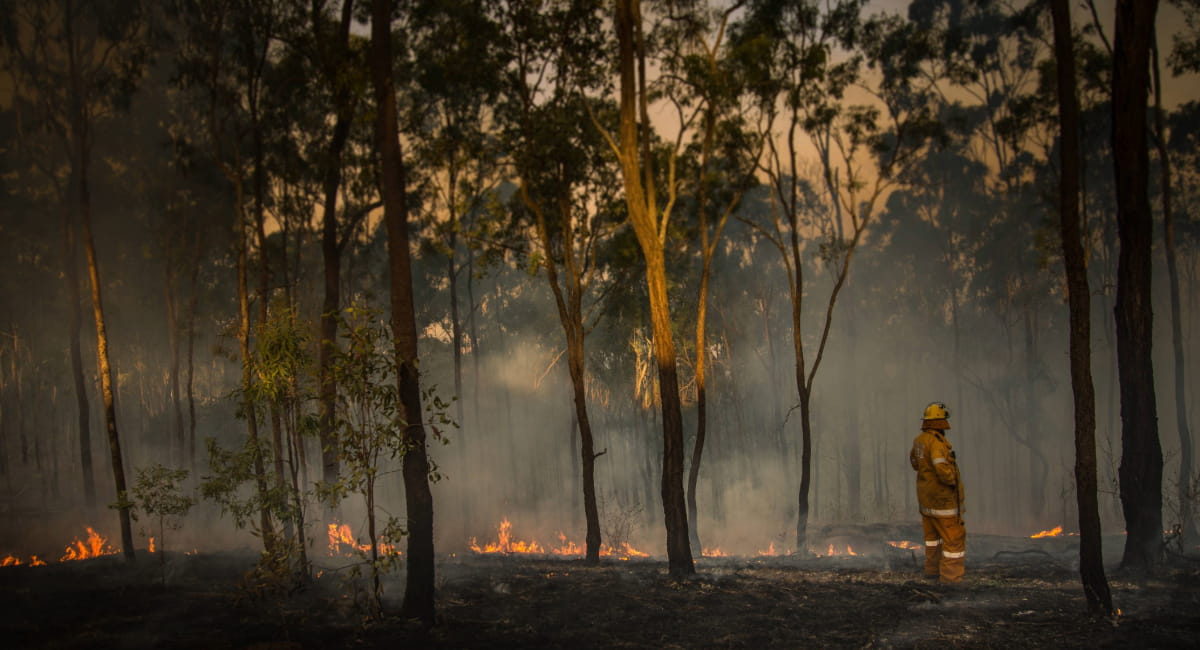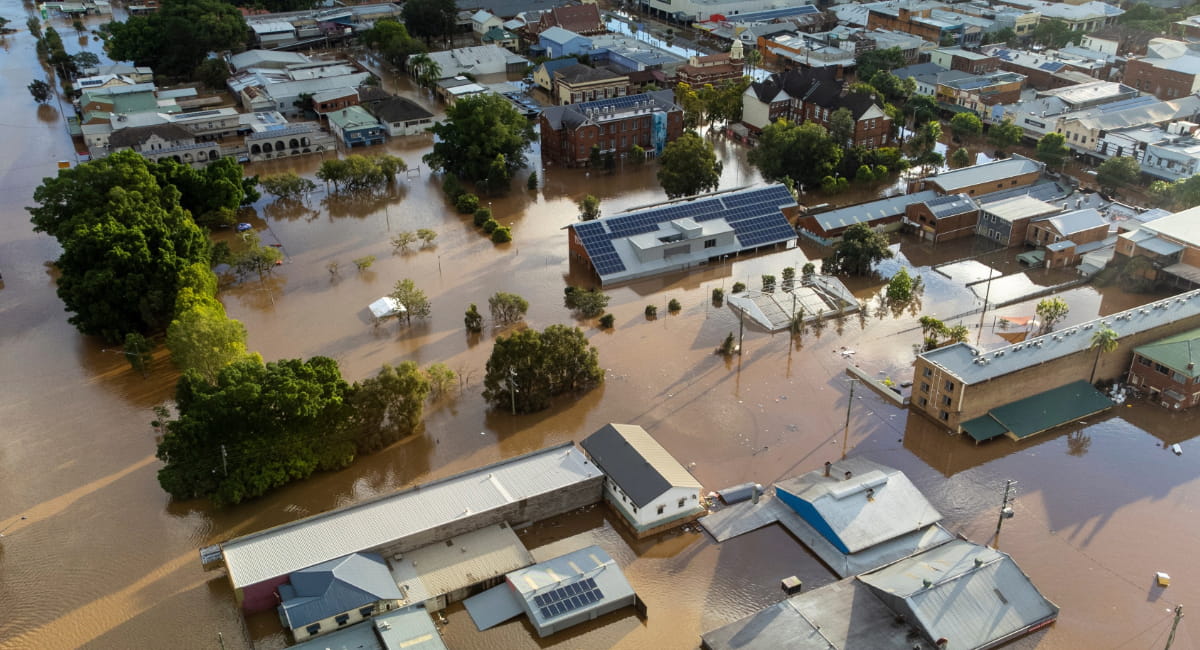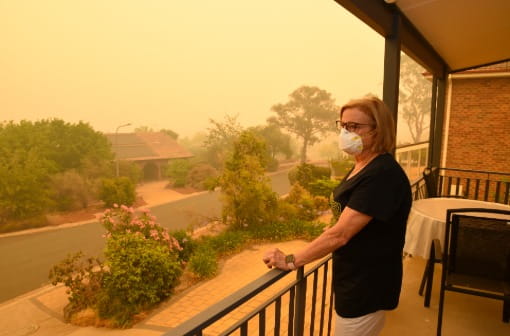“Often, people focus on the loss of property, but it’s the other, less tangible things—like, loss of community and connection to place—that can be just as challenging.”—Antonia Mackay, Manager of Resilience, Australian Red Cross.
Key points
- Preparing for natural hazards involves four key steps: get in the know, get connected, get organised and get packing.
- Practical actions—like checking your home, contents and car insurance, making a plan and having an emergency kit—can make all the difference.
- Looking after your wellbeing and community connections can be just as important as physical preparation.
Australia is no stranger to extreme weather events. From bushfires and floods to cyclones, heatwaves and storms, natural hazards can have devastating effects on individuals and communities. And while these events may be unpredictable, there are practical steps you can take to reduce their impact and recover sooner.
Antonia Mackay, Manager of Resilience at the Australian Red Cross, explains that preparation goes beyond just protecting your property—it’s also about safeguarding your emotional wellbeing, social connections and sense of stability.
“Often, people focus on the loss of property, but it’s the other, less tangible things—like, loss of community and connection to place—that can be just as challenging,” says Antonia. “We try to help people prepare the entirety of their being, so they can manage the long-term impacts of disasters.”
So, how can you prepare effectively? Antonia and the Red Cross recommend a four-step approach: get in the know, get connected, get organised, and get packing.
Let’s explore each of these in more detail.

Step 1: Get in the know
The best defence against disasters is knowledge. This means:
- Understand the risks in your area. Different regions have different hazards—from flooding to extreme heat. Your local council, community members and the Bureau of Meteorology (BoM) and state emergency services can all provide important insights.
- Stay informed. Download emergency apps for your state or territory (for example, Emergency+, Alert SA, Hazards Near Me and the BoM Weather app) to receive real-time warnings. Antonia says tuning into ABC Radio is another reliable way to get updates during a major emergency.
- Know your insurance coverage. Many people only realise they’re underinsured after a hazard hits, Antonia says. So check that your home, contents and car insurance policies are up-to-date and that they provide adequate coverage for events like floods, bushfires or storm damage.
“I’d also really encourage people to have a plan for protecting the things that they can’t replace,” says Antonia.
“Because it’s those things that make you who you are—like your wedding dress, or photos or medals, which are incredibly important for sentimental reasons. And these are the things that people get quite distressed about post-disaster.”
Step 2: Get connected
Having a strong support network can make an enormous difference in how well you cope with an emergency.
- Identify three key people you can rely on. This should include someone who can provide practical assistance (like helping you evacuate), someone for emotional support and someone outside your immediate area who can act as a communication contact.
- Set a family meeting point. If phone lines go down, where will you regroup? Make sure you agree on a safe meeting location in advance.
- Check on vulnerable neighbours. Elderly residents or people living with a disability may need extra help preparing or evacuating. Offering support now can strengthen community resilience later.
“Building supports around you and that social connection is incredibly important, because people do die in isolation,” says Antonia. “So checking in on neighbours and being part of a community can be life-saving.”

Step 3: Get organised
Proper preparation can reduce stress and help you act quickly in an emergency.
- Create a personalised emergency plan. The Red Cross website has a lot of useful and practical emergency resources, including the “RediPlan”, which helps households map out what to do before, during and after an emergency.
- Store important documents safely. Have physical and digital copies of your ID, insurance information, medical records and other financial details. Keep originals in a waterproof and fireproof safe.
- Make a will. People die in emergencies. A will can bring peace of mind and reduce stress for loved ones, should the unforeseen happen.
- Identify items of sentimental importance. Saving precious items or keepsakes can help with recovery when you lose everything. It protects your links to the past which can bring comfort.
- Plan for your pets/livestock. Consider what your animals need for a week, such as food and medication, and how you would identify, transport and accommodate them. It is also smart to have a plan in case you can’t make it home.
- Keep emergency numbers handy. Save State Emergency Service (SES), local council, power company and hospital contacts in your phone and write them down in case of power loss.
“We can often make poor decisions in an emergency because of heightened stress,” says Antonia. “Making decisions in advance and following a plan can keep you safe because you have had time to think things through.”
Step 4: Get packing
Every household should have an emergency kit packed and ready to go. Essentials include:
- a battery-powered torch and extra batteries
- phone chargers and power banks
- a first aid kit
- bottled water (at least three days’ supply)
- non-perishable food and a can opener
- important documents (identification, insurance, medical info)
- medications and prescriptions
- cash (in case of EFTPOS outages)
- pet supplies (if applicable).
With heatwaves becoming more common, Antonia puts a slightly different spin on “get packing”. In this context, she explains that it’s more about making sure you’ve got all of the food and supplies you might need, so you can stay indoors and out of the heat.
“Heatwaves are becoming an increasing hazard that we want to encourage people to prepare for, particularly in urban settings where there isn’t the same kind of tree canopy that exists in more regional areas,” says Antonia.
“So that is probably the most growing concern for us, and we’re encouraging people to prepare, because it actually kills more people than any other disaster across Australia.”
.jpeg?h=650&w=1200&hash=DE943AAB64F7C9BF46D92A61E8D0E8C0)
Caring for your wellbeing—before, during and after a disaster
Disasters can cause shock, anxiety and long-term emotional stress, and recovery can take years. So, beyond physical safety, it’s crucial to look after your wellbeing.
“I think preparing your mind for an emergency is incredibly important,” says Antonia. “So, that means anticipating that it’s going to be a stressful event, identifying ways to manage your stress and then practising them—so that, in the event of an emergency, you can actually calm yourself down.”
Here are some of her top tips:
- Have a stress-management strategy. Practise techniques like deep breathing or Antonia’s “breathing with colour” exercise—where you breathe in your favourite colour and breathe out your least favourite colour to calm your racing mind. Apps like Smiling Mind can also be an invaluable resource in learning to cope with stress.
- Acknowledge that recovery takes time. It’s normal to feel overwhelmed post-disaster. Seeking support from mental health professionals or community groups can help you process the experience.
- Rebuild social connections. Connecting with neighbours, support groups or volunteers can make recovery smoother and lessen feelings of isolation.
“A lot of people experience short-, medium- or long-term mental health deterioration as a result of their exposure to a natural hazard and disaster,” says Antonia. “And that’s because it’s a huge traumatic event—not just for an individual, but the whole community—and it impacts every facet of your life.
“Even resilient people can struggle mentally after a disaster, so prioritising mental health and seeking help when needed is crucial.”


